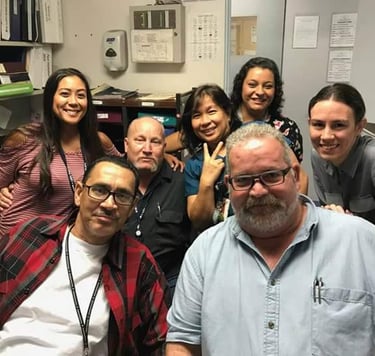Safe Injection Sites: Do They Help or Enable?
The populations served by safe injection sites often include marginalized individuals who may otherwise lack access to medical care and drug treatment options. These sites are typically located in urban areas with high rates of drug use and overdose fatalities.
HARM REDUCTION & PREVENTION


Understanding Safe Injection Sites
Safe injection sites, also known as supervised consumption sites or safe consumption spaces, are designated locations where individuals can use illicit drugs in a controlled and hygienic environment. The primary aim of these facilities is to reduce the health risks associated with drug use, such as overdoses and the transmission of infectious diseases like HIV and Hepatitis C. Safe injection sites are staffed by trained professionals who offer support, addiction resources, and medical assistance when necessary, thereby promoting harm reduction strategies among drug users.
The populations served by safe injection sites often include marginalized individuals who may otherwise lack access to medical care and drug treatment options. These sites are typically located in urban areas with high rates of drug use and overdose fatalities. By providing a safe space for drug consumption, these facilities aim to decrease public drug use, reduce health care costs related to drug use emergencies, and ultimately save lives. According to estimates from various health organizations, safer consumption spaces have contributed to a significant reduction in overdose deaths in cities where they have been implemented, such as Vancouver, Canada, and several cities in Europe.
Globally, there has been an increasing recognition of the need for safe injection sites as part of a comprehensive approach to drug policy. For instance, Australia and several European countries have successfully integrated these facilities into their public health plans. Research consistently indicates a correlation between the existence of supervised sites and lower rates of drug-related deaths, providing compelling evidence for their effectiveness. Data from these implementations underscore the potential positive impact of safe injection sites not only on individual health outcomes but also on community safety and well-being.
Benefits of Safe Injection Sites
Safe injection sites have increasingly emerged as a vital public health intervention aimed at addressing the complexities of drug use in urban areas. These facilities are designed to provide a safe and hygienic environment for individuals to consume drugs under the supervision of trained medical staff. One of the most notable benefits of safe injection sites is the significant reduction in public drug use. By providing a designated space for users, communities often experience a decrease in syringes discarded in public areas, thereby enhancing overall cleanliness and safety.
Moreover, safe injection sites have been shown to lower the rates of drug overdoses. For instance, cities like Vancouver, which implemented such facilities, reported a marked decline in overdose fatalities, attributing these improvements to immediate medical assistance available on-site during critical situations. This timely intervention can mean the difference between life and death for individuals using opioids, showcasing the sites’ essential role in saving lives.
Additionally, these facilities play a crucial role in decreasing the transmission rates of HIV and Hepatitis C. By providing clean equipment and a controlled environment, safe injection sites help to minimize the risk of spreading these viral infections among injecting drug users. Statistics from various cities indicate that communities with these facilities have seen substantial public health advancements, including a drop in new infection rates. Case studies highlight the positive impacts on local communities, where the health of the population improves alongside a decrease in healthcare costs related to managing drug-related diseases.
Furthermore, testimonials from users and healthcare professionals consistently reinforce the benefits of safe injection sites. Many users express gratitude for having a safe place to access their substances while remaining connected to health services. Healthcare professionals acknowledge that these sites provide crucial opportunities for education and rehabilitation, fostering a pathway towards recovery. The advantages of safe injection sites demonstrate that a compassionate approach to drug use can yield profound public health benefits.
Criticisms and Concerns
The implementation of safe injection sites has sparked considerable debate within communities and among policymakers, particularly due to concerns regarding their potential drawbacks. One of the most prominent criticisms is the argument that these facilities may inadvertently enable ongoing drug use. Detractors assert that providing a supervised environment for injecting drugs does not address the root causes of addiction and may, in fact, perpetuate substance dependence. Critics suggest that this could lead to a normalization of drug use, making it more socially acceptable among those struggling with addiction.
Additionally, there are concerns that safe injection sites could attract crime or anti-social behavior to their surrounding areas. Law enforcement officials often voice apprehension that the presence of such facilities might escalate drug trafficking activities, ultimately compromising community safety. Anecdotal evidence from communities with existing safe injection sites often highlights increased public drug use, open drug dealing, and a rise in reports of theft and violence. Such claims are frequently reinforced by community surveys indicating negative perceptions towards these establishments.
Another significant opposition point is that safe injection sites might disincentivize individuals from pursuing long-term treatment options. Critics argue that by providing a place to use drugs safely, these facilities could divert users from needed rehabilitation and recovery programs. Research has shown that individuals who participate in safe injection programs may face fewer incentives to explore treatment avenues, perpetuating a cycle of addiction rather than fostering recovery.
While many advocates argue that these facilities save lives and connect users to further support, it remains essential to consider these criticisms seriously. Engaging with both community members and law enforcement perspectives illuminates a complex issue requiring comprehensive examination. The dialogue surrounding safe injection sites must address the potential negative impacts while also considering the benefits to better inform policy decisions.
Conclusion: Balancing Public Health and Community Safety
The discussion surrounding safe injection sites (SIS) encapsulates a crucial intersection of public health and community safety. The various perspectives presented throughout this blog post reveal a complex landscape where the potential benefits of these facilities may serve to reduce harm associated with substance use while also raising valid concerns among community members. Proponents argue that safe injection sites can mitigate the risk of overdose, decrease the spread of infectious diseases, and direct individuals toward recovery services. However, detractors often express fears regarding increased drug activity in residential areas, which can influence public safety and community wellbeing.
In light of these contrasting views, it becomes imperative for policymakers to approach the implementation of safe injection sites with a framework that emphasizes collaboration and community engagement. Listening to the voices of residents, local businesses, and public health officials is necessary to strike a balance between harm reduction and community safety. Policymakers should deploy comprehensive strategies that incorporate educational initiatives, addiction treatment programs, and supportive services in tandem with SIS. By fostering a cooperative environment, stakeholders can address misconceptions about these facilities and collaborate on solutions that align with community values.
Furthermore, it is essential to engage in continuous research to evaluate the long-term impacts of safe injection sites on community dynamics. Ongoing analysis will provide empirical evidence that can guide adaptations to SIS operations, address emergent concerns, and enhance community trust. Thus, a model that integrates feedback from all constituents will not only maximize the health benefits of safe injection sites but also bolster public confidence in these initiatives. Ultimately, the successful implementation of safe injection sites hinges on a commitment to mutual respect, transparency, and an unwavering focus on public health objectives. The conversation around SIS should remain open and subject to evolution as society navigates the complexities of substance use and its ramifications.




















